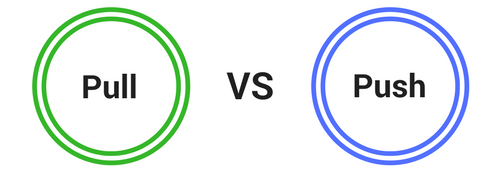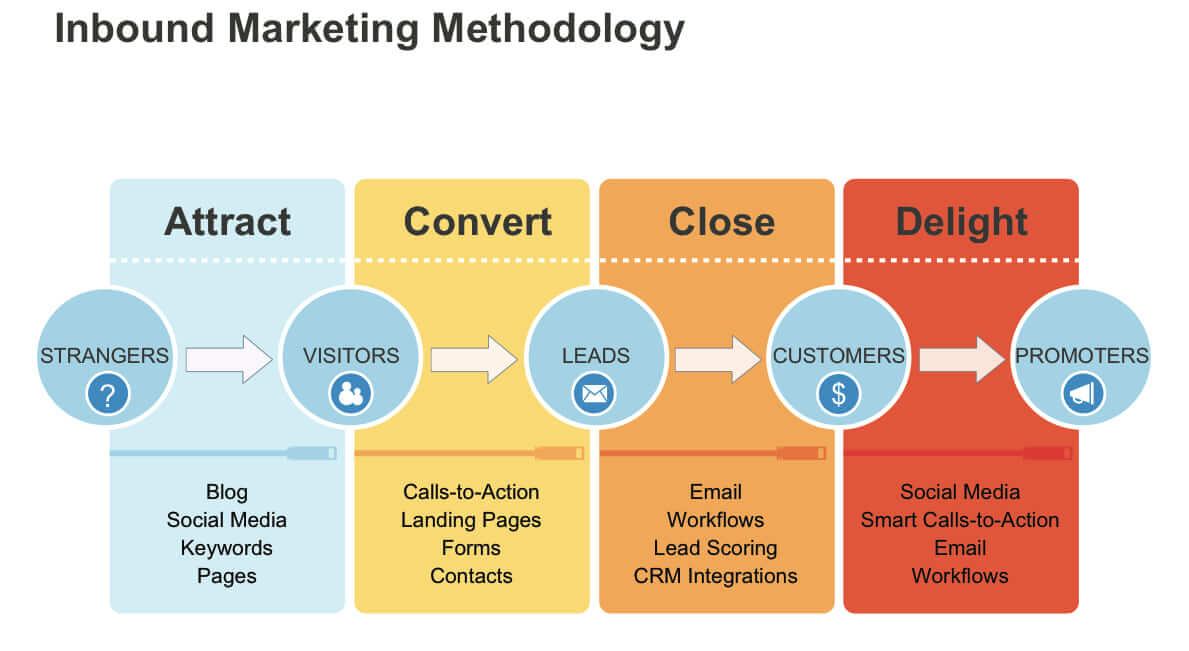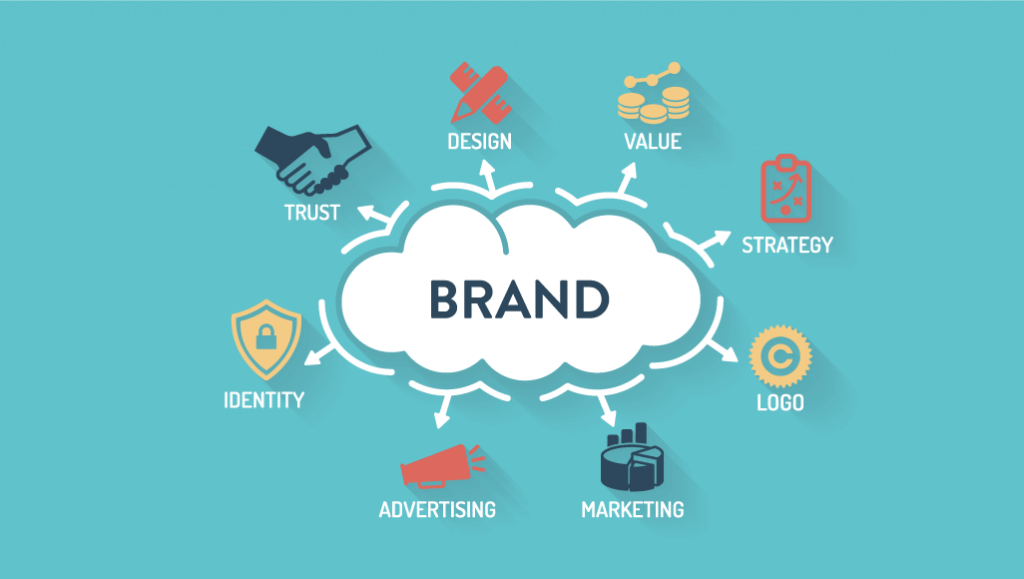How to Create Super-Effective Pull-Through Sales Strategy And Get the Most of it to Skyrocket Your Business
1. So what is a pull-through sales strategy?
2. Pull vs. push strategies
3. When to use a pull strategy?
4. Pull-through strategy advantages
5. Pull strategy life cycle stages
6. Tactics to use in a pull-through strategy
7. Examples of pull tactics
Useful tools:
1. Newoldstamp - Email signature marketing
2. Mailchimp - Email builder and sender
3. Hubspot Email Marketing - Marketing automation platform
4. MailerLite - Landing page builder
5. Canva - Online tool for making designs
We all know about a traditional media marketing. It’s when you put an ad on TV or in a magazine, and your job is basically to interrupt the audience. When people enjoy their favorite TV-show, and the commercials come on, you can only hope that they won't get up to get a snack but will watch your message to the end and take action. That's called push marketing. This way marketers did things for many years, but we all know that marketing is changing. Nowadays, with the advent of social media, we see a switch towards something we call pull marketing.
Today we will be talking about a pull-through sales strategy, its pros and cons, and compare pull and push strategies.
So what is a pull-through sales strategy?
It is a technique used to attract interest to your brand. Rather than pushing your offer to the customer, a pull-through sales approach entails the use of pull schemes or the communication of information to bring people to you.
Pull vs. push strategies

To better demonstrate the difference between push and pull marketing, we are going to take you to Greenwich Village, NY.
Monica just got the inheritance money from her aunt. Now she's going to open a restaurant. Since she has enough money, she wants to use advertising and mass media such as television, radio, flyers, outdoor banners to promote her new business the best she can. Her brother even suggested her to sponsor his favorite rugby team. That is what we call push marketing.
Andrew, a young pastry chef who has baked hundreds of awesome cobblers and croissants for his friends, lives on the other side of the town. He has been dreaming about his own bakery since the early childhood. Now when Andrew has saved some money, he can make his dream come true. Andrew knows that advertising may require significant investments and for the time being he can't afford TV or radio ads. You know, Andrew is a tough nut to crack. So he decides to develop social media pages on Facebook, Instagram, and Pinterest. Day in and day out, this guy works hard to capture attractive pictures to post on Instagram and make people want his products. To boost the reach of his social media content, attract more followers, and market his business better, he carefully selects hashtags that will fit his target audience's interests. That is what we call pull marketing, a great example of pull-through opportunity for small businesses with limited ad budgets. Pull through service meaning in business is often associated with creating consistent demand by building long-term customer interest through indirect marketing.
Note that it would be a fallacy to believe that push-through marketing can only be used when you have money on advertising. Therefore, to attract more customers, Andrew is going to use both approaches simultaneously. For example, he can create and send a personalized email marketing campaign (which is push marketing) to reach out to those who might not have heard of his new bakery yet and use incentives to drive pull through business via exclusive email-only offers.
When to use a pull strategy?
Needless to say that pull marketing works well for large firms with the biggest shares of a market in a given industry. Market leaders are companies like Apple, Microsoft, General Motors, Amazon, Canon, and others. For them, the creation of educational content is crucial because they need to educate people about their products or services. However, such established companies do need to use push marketing as well. They use it if they have a new product offering to present to new and existing customers who are unaware of its existence or their need for this product. Speaking of small players and new start-ups, they also won't be able to use pull strategies alone. All because from the very beginning they can have no audience to sell to. Being very small, they may have no funds to pay for adequate search engine marketing. For such firms, push marketing can be used to create awareness about their existence and innovations. Once they have a decent amount of social media followers and email newsletter subscribers, it might become possible to switch to pull marketing tactics. What does pull through products mean, especially in the context of retail or e-commerce? It refers to consumer demand driving the movement of a product through a distribution channel.
So a pull strategy should be used when:
- The user knows what he is looking for;
- branding is of great importance.
Pull-through strategy advantages
The problem with push marketing is that you can't control what the viewer sees right before he/she looked at your message. You don't know what was on TV before the commercial came on and where people were in the article when they looked over and saw your ad. So it has some drawbacks. In pull marketing, you put content out on the Internet. People find it, click on it, and you draw them back into your business to learn more. And the advantage there is when somebody clicks on your website or your Facebook page or your LinkedIn profile, you do control everything there. So people can see your message in the context that you've created. To illustrate the effectiveness of pull-through selling strategies, examining business growth case studies where these techniques have been successfully implemented can provide valuable insights into how they contribute to significant business expansion and market penetration. Define pull-through offer. It usually includes incentives designed to entice end customers to actively seek out your products, such as coupons or special bundles.
Pull-through strategy vs. inbound marketing
Many often confuse inbound marketing and a pull-through sales strategy, but understanding the pull through rate meaning in marketing can help clarify the distinction between the two. Although these two are closely interlinked, they are not the same thing. Inbound marketing is more focused on content (newsletters, white papers, eBooks, blog posts) to promote a business, a product, service, etc. Pull marketing is intended to draw customers to a company, it’s website, products or services, usually through advanced search engine optimization (SEO). Because a pull-through strategy in sales is so focused on SEO, it needs to happen first before the inbound marketing can be successful.

Image courtesy of Adastrauk
Pull strategy life cycle stages
Needless to say that to keep people around, you should deliver value to your customers through your marketing efforts, but how can you figure out which value is right for them at a particular moment? Let's see how life cycle stages impact the sales approach needed.
Imagine that you enter a clothing shop during the walk. You have no concrete idea of anything you want to purchase. All you want is just to look at the new spring collection and decide whether you like some dress or shoes, or even a tiny blue purse. Suddenly, a "hungry" salesperson walks up to you and attacks you with multiple questions trying to get you to buy something. Because the saleslady is too focused on pushing her products onto you and you are irritated by too much attention, you leave empty-handed.
Now imagine that you run into the same store right before the party. You are 100% sure that you want the black dress with silver sleeves you saw in their online shop. The only problem is there is no XS size on hangers. Of course, you don’t have much time to wait, so you want a salesperson to help you as soon as possible. However, the saleslady is busy talking over the phone, so you leave the shop being frustrated with the lack of attention.
What do you think of these two examples? In the first case, you were in the Awareness stage, and in the second situation, you were ready to buy, what we call the Decision and Conversion stage. At the Decision and Conversion stage, leveraging tools like an AI Sales Agent can help deliver the right message at the right time, increasing the chance of conversion by responding instantly to buyer intent.
Depending on where a lead is in a buying cycle, his/her expectations for how salespeople should treat him/her are different. And a good marketer should know how to adapt marketing to a prospect’s stage in the cycle. Thus, to understand the full scope of the decision process your customers go through, let's look at the decision-making process as a process with four stages that represent the entire customer experience. These stages are:
- Awareness
- Consideration and Engagement
- Decision and Conversion
- Activation and Retention
At the Awareness stage, customers are just beginning to explore solutions to their problems. They want to browse around and get educated, rather than to be approached by a pushy salesperson who is only interested in winning the deal. At this phase, you need to develop credible content for those who are at the earliest stages of their buying process. Keep in mind that the best option for you right now is to focus on customers and their problems, not the solution you provide for them.
At the Consideration and Engagement stage, customers start to do more research and look for the next logical step to solve their problems. For this stage, prepare high-quality content to put it on your site and promote it through your social media networks. However, remember that people want to have their problems resolved in the first place, they don't like the idea that they need to spend money on your product (in fact, not only yours but any product) no matter how cool it is.
Once the customer moved onto the Decision and Conversion stage, it's a good time to provide content that presents your branded products or services. Also, you may need to send an email with a coupon code to those prospects who already know your brand but haven’t bought from you yet.
Activation and Retention. So you made the sale and feeling happy about this, but you’re not done yet! Now it's high time to give your customers a reason to come back to you for repeat purchases or spread the word about your fantastic product. Create content that reaffirms your product's value and builds trust. Also make sure that your audience can easily find and share this content through proper SEO, social media channels, etc.
Tactics to use in a pull-through strategy
As you can see, pull marketing goes hand-in-hand with inbound marketing. Basically, both approaches are intended to get customers come to you. Using the following five tactics, you will be able to reach your marketing goals.
-
Blogging

Blogging is great for educating your audience. Helpful, relevant blog posts that address people’s pain points will likely make your readers move through your funnel. For instance, content that highlights product durability testing for promotional products can reinforce consumer trust and lead to stronger brand engagement. Blog articles are also keywords rich and are easily indexed by search engines, which aids in overall SEO strategy.
-
Social Media Marketing

Blogging becomes even more effective when used in conjunction with social networks. You can attract your FB, LinkedIn or Twitter followers to your recent blog posts by sharing them on your social media pages. However, when using social networks for promotion, you need to understand that it's impossible just to take. Be ready to give something, answer your followers' questions, give advice, help them in some way.
-
Email Marketing

Does email marketing belong to the push or pull strategy? Well, it can be classified as both. No doubt, aggressive, annoying, low-quality and spammy emails belong to push marketing. On the other hand, people can sign up to receive your emails because they found your content interesting. So with the help of email, you can provide the right prospects with the right content at the right time.
-
Webinars

Webinars also educate people. This tactic allows you to understand your audience better, show your expertise in topics relevant to them, and build trust.
Pro tip: Try an email signature generator to create a professional email signature. One of the most effective ways to promote your webinar is to add a banner with a registration link to your email signature.
-
Educational Content

Ebooks, newsletters, guides, explanation videos, white papers, and other educational, non-salesy info can be extremely effective in attracting more fairly qualified prospects to your business. Why? All because you don’t sell. You teach people for free.
Now when you are familiar with a pull-through selling, you may want to know how to create a pull-through strategy on your own. Here are five critical steps to keep in mind:
- Define who you need to reach out and why;
- Understand where you can make a connection (what fits your business: LinkedIn, Instagram, etc.);
- Create credible content (eBooks, white papers, blog posts, and so on);
- Bring your prospects to you/the next step (use call to actions, set up demos and consultations);
- Track and analyze to optimize the performance.
Examples of pull tactics
As we mentioned above, most companies use push and pull strategies to promote their businesses. However, some of them try to put their products or services in front of people who don't necessarily have any knowledge of their company. Others aim to get the audience to find their company on their own.
The idea of pull marketing is that consumers will find you because you were able to build a successful brand.

Now let's take an underground music label who releases albums of underground bands as an example of a pull strategy. Such businesses are usually launched by enthusiasts who care more about music than sales. In addition, typically they don't have a large budget to spend on hard advertising. In such situation, they choose to create a website with pleasant and intuitive design, work on search engine optimization, write engaging blog posts about underground music and related bands, spend a lot of time communicating with like-minded people in social networks. As a rule, fans of this kind of music find the label and its audio CDs by themselves.
Conclusion
In this blog post, we answered the questions like "What is a pull strategy?", "When is a pull strategy appropriate to use?", "What is the difference between pull and push marketing?". However, in reality, it doesn’t matter which type of marketing you prefer to grow your business. What is more important is whether it works for you or not. Soon we will be discussing push marketing and its advantages. Stay tuned!



